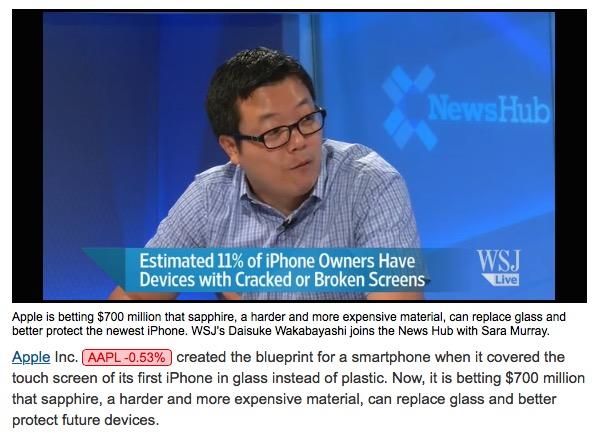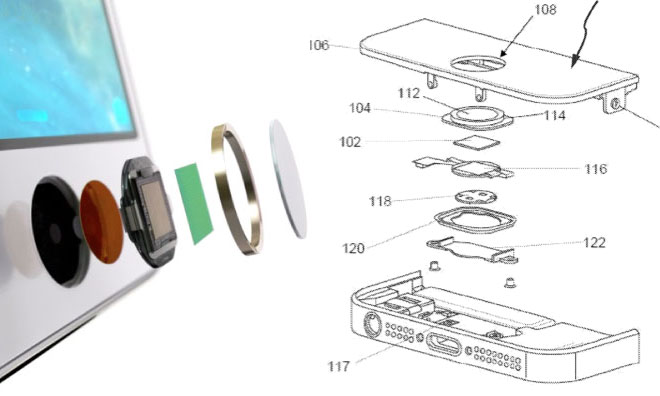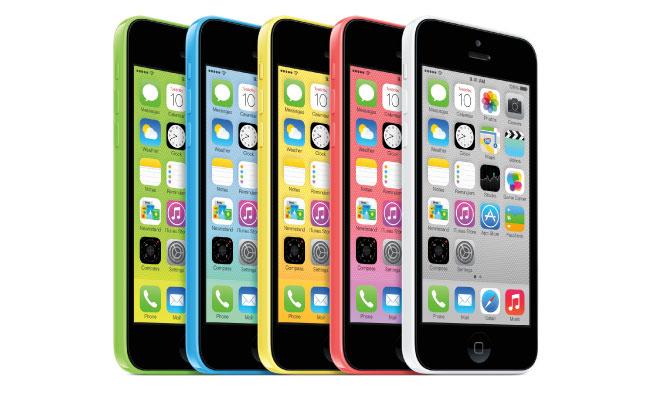Less than two months ago, Daisuke Wakabayashi of the Wall Street Journal reported that Apple was "betting $700 million" on a plan to use sapphire screens on its upcoming iPhones. After being proven wrong, the writer now claims that Apple radically reversed its plans just weeks before the new devices went on sale.
Wakabayashi's latest sapphire story for the Wall Street Journal constructs a timeline that states Apple decided "not to use sapphire" only after tests showed the material "proved brittle" and cracked, citing "people familiar with the matter."
WSJ prints speculation, blames Apple when wrong
However, in mid August the same author was reporting sapphire iPhone rumors as fact, insisting that "the first sapphire display screens for the forthcoming larger iPhone and smartwatch are expected to roll off production lines this month."
Wakabayashi was so confident in the rumor that the Wall Street Journal headlined his story, "New iPhone, A Sapphire Screen and a Higher Cost," although it also hedged the report with a minor subhead: "Apple considers using harder material in pricier models."
The report appears to have been based almost entirely upon the speculation of Eric Virey, "a senior analyst at French research firm Yole Développement," who had been promoting the idea that Apple had partnered in GT Advanced specifically with iPhone screens in mind.
The speculation claimed that the two firms planned to rapidly ramp up production for the material for new iPhones within just a few months of launch, ostensibly before even bothering to test whether sapphire "proved brittle" in actual use.
Apple never commented on its actual plans for GT Advanced. It has long been known that Apple has a variety of needs for sapphire production, ranging from the protective lens covering iPhone cameras to the transparent armor used to protect Touch ID sensors. Apple has since revealed that more expensive models of Apple Watch would also use sapphire screens, but those devices will also use jewelry-grade stainless steel or 18k gold, unlike any consumer-priced product Apple currently makes.
Speculation Gone Wild Video
Wakabayashi's August report for the Wall Street Journal was accompanied by a video interview of the author. A host introduces Wakabayashi by confidently claiming, "Apple is spending $700 million on sapphire screens for its new phones!"
In the video, Wakabayashi appears to be fully aware that he is reporting speculation as fact, initially retreating to the safer prediction that Apple was merely "looking into sapphire, which is a lot harder to scratch." August would be a bit late to be "looking into" the use of an expensive new material that needs to flawlessly ship on millions of units within a few weeks.
Asked by the host if sapphire would prevent screens from ever cracking or breaking, Wakabayashi answered "yeah. So, it's kinda hard to say, and I know it's not the best answer, but basically we don't know exactly what the sapphire... the strength of the sapphire depends on the cut and thickness that Apple is going to use. But sapphire as a material is much, much stronger than glass, and therefore should prevent, uh, damage to your screen."
The host then reminded watchers, "Apple is still being pretty hush hush as they almost always are!" before asking, "but do we know if this is going to be a change in all iPhones? Is is just going to be some of the higher end phones? How is this going to work?"
Wakabayashi answered that "sapphire is much more expensive than glass to manufacture, so for now what we're hearing from the supply chain is that Apple is looking at putting it in the high end phones, like the ones with greater memory, which are more expensive, so you don't notice the price difference as much."
Brainstorming disastrous consequences for Apple's apocryphal sapphire screens
After stating that sapphire screens were entering production just weeks before Apple unveiled its new iPhone 6 models, Wakabayashi also presented related speculation of potential doom, including guesstimates from Virey claiming that moving from glass to sapphire screens would dramatically increase Apple's per unit costs from $3 to $16.
While admitting that the Wall Street Journal and its sources had no idea of the specifics in terms of the "cut and thickness that Apple is going to use," the author confidently reported an exact dollar amount on the costs per unit Apple would incur to make this move, then cited Matt Margolis, "an analyst at PTT Research and a GT investor," as speculating that "if Apple doesn't raise prices, the higher cost could erode the iPhone's profit margins," but that "Apple may be willing to absorb the hit to separate its products from those of rivals."As it turns out, Wakabayashi's written and videotaped speculation based on "supply chain" chatter and analyst thoughts was completely wrong
Wakabayashi also added that sapphire would contribute to additional weight, and added comments from sapphire-competitor Corning Glass that claimed that regular glass performed better in breakage tests and reflected less light than sapphire.
As it turns out, Wakabayashi's written and videotaped speculation based on "supply chain" chatter and analyst thoughts was completely wrong. But rather than admitting that it reported a dubious rumor as a well sourced fact, today's reporting by the Wall Street Journal backtracked to say that it earlier only "reported in August that Apple was considering using sapphire screens for some iPhones."
Speaking in the passive voice, Wakabayashi now explains that "sapphire was seen as a potential solution to a big problem for iPhones and other smartphones— broken or scratched screens," without actually saying that he helped invent and promote the idea as a virtual certainty, while at the same time questioning whether it was even a good idea.
Wakabayashi again cited Virey as saying that his GT plant capacity estimate "suggests Apple had planned to use the sapphire screens for more than the watch," while Virey himself stated, "for me, there is absolutely no doubt that it was for the smartphone."
Apple has never promoted the idea that sapphire iPhones were coming, nor even acknowledged any need to improve its screens at tremendous expense. On the other hand, Apple's equally massive investments in technologies such as Touch ID fingerprint sensors and the advanced custom design of its A7 and A8 Application Processors took years to develop, rather than being last-minute feature inclusions tacked on a few weeks before mass production began.
Somewhat ironically, after Apple acquired AuthenTech but before it unveiled Touch ID, the company's apparent plans were taken to task by fingerprinting expert Geppy Parziale, who described a catch-22 problem for consumer-grade sensors which wear out in regular use, while "the coating layer on the fingerprint sensor surface cannot be too thick otherwise the electrons from your body cannot reach the metallic surface of the sensor to generate a fingerprint image."
"Unfortunately there is no existing solution to this," Parziale claimed. "Manufacturers can only try to make the fingerprint sensor last longer, but sooner or later that device will stop working properly." Apple's innovative solution was to use a thin layer of sapphire to protect the delicate sensor.
Similar speculative doom for iPhone 5c
Last year, the same Wall Street Journal staff (including Lorraine Luk and Eva Dou, who assisted on Wakabayashi's sapphire iPhone reports) joined Reuters in stating that Apple had dramatically "cut iPhone 5c orders," while speculating that the cuts were "fueling concerns about weaker-than-expected consumer demand and the company's pricing strategy."
The site backpedaled its story by the end of the day, changing its headline to "Apple's Dual iPhone Strategy in Doubt," while shifting the narrative to focus on the idea that Apple's plan to "broaden its appeal with a cheaper version of the iPhone [...] appears to be faltering after a few weeks."
As it turned out, Apple's iPhone 5c turned out to be one of the most successful smartphone launches of the year, outselling all Blackberry phones, all Windows Phones, and every individual Android flagship in its first quarter.
The maligned model's sales have continued to remain healthy, with half of iPhone 5c buyers coming directly from Android.
In January, rather than admitting they were wrong about iPhone 5c, Luk and Dou joined Wakabayashi in reporting that Apple was "expected to scrap" iPhone 5c and its plastic construction when it introduced new larger iPhone 6 models later in the year. Apple continues to sell iPhone 5c.
Rumors weren't wrong, Apple changed its plans!
The inability of the Wall Street Journal to admit that its ostensibly "well sourced" reports are often based on deeply flawed analyst speculation and notoriously unreliable "channel checks" is earning the famed paper a reputation on par with rumor blogs that claim to know everything about what Apple is doing yet report false leads and fail to anticipate major new developments.
Just prior to WWDC this summer, 9to5 blogger Mark Gurman published a "rumor roundup" that incorrectly predicted new "Healthbook," TextEdit and Preview apps for iOS; the "removal" of Game Center; the addition of a "Control Center for OS X" and an iPad "split screen UI" and a secondary iPad display feature.
Those predictions were not only wrong, but failed to foresee virtually all of the significant new features Apple unveiled for iOS 8 and OS X Yosemite, ranging from Apple's entirely new Swift programming language and Metal API to OS X Yosemite's new focus on Spotlight search; a new Widget store for Notification Center; new privacy and performance features in Safari; new Messages features; new Mail markup features; the new iCloud Drive; any hint of the new Handoff, Instant Hotspot, SMS/Phone integration between iOS and OS X that Apple collectively referred to as "Continuity"; the new iCloud Photo Library and revamped Photo apps for iOS and Mac; new Keyboard features and third party flexibility; new Family Sharing; and new enterprise features, including connectivity with third party cloud storage services.
Rather than admitting he was wrong, Gurman later insisted on twitter, "I am convinced Apple completely redesigned Healthbook and dropped the 'book' because of the leak," virtually the same response Wakabayashi gave after realizing that iPhones weren't getting the sapphire screens his sources had predicted.
 Daniel Eran Dilger
Daniel Eran Dilger









-m.jpg)






 Charles Martin
Charles Martin
 Malcolm Owen
Malcolm Owen
 William Gallagher
William Gallagher

 Christine McKee
Christine McKee
 Wesley Hilliard
Wesley Hilliard

 Andrew Orr
Andrew Orr







59 Comments
Judging by eBay, water is a much more serious threat to iPhones than cracked screens. It is easy to get a cracked screen replaced but once an iPhone gets wet, it is dead for good in most cases. I have my fingers crossed that the Apple Watch shows the future of Apple's mobile products: Completely sealed and water resistant.
Amazing that people get years in prison for selling one share of a company for a $10 profit using insider information, yet jackasses such as this go unscathed when their comments can swing the fortunes of a company, as they get to use semantics to get them out of sticky situations (e.g., Apple is looking into). Fucker.
I like that DED is giving us regular articles now.
[quote name="TheWhiteFalcon" url="/t/182699/after-incorrect-report-on-apples-use-of-sapphire-on-iphone-6-wsj-claims-apple-changed-plans-last-minute#post_2614473"]I like that DED is giving us regular articles now.[/quote] Yeah it's great not having to wait till the weekend.
Great insight once again, reaffirms my dismay in mass media. You just need to watch three minutes of Bloomberg, CNBC & WSJ to realize all hope is lost. Long live the Horace Dedui's of this world.